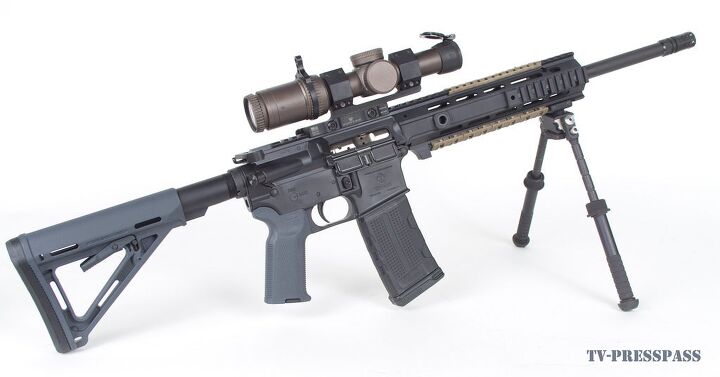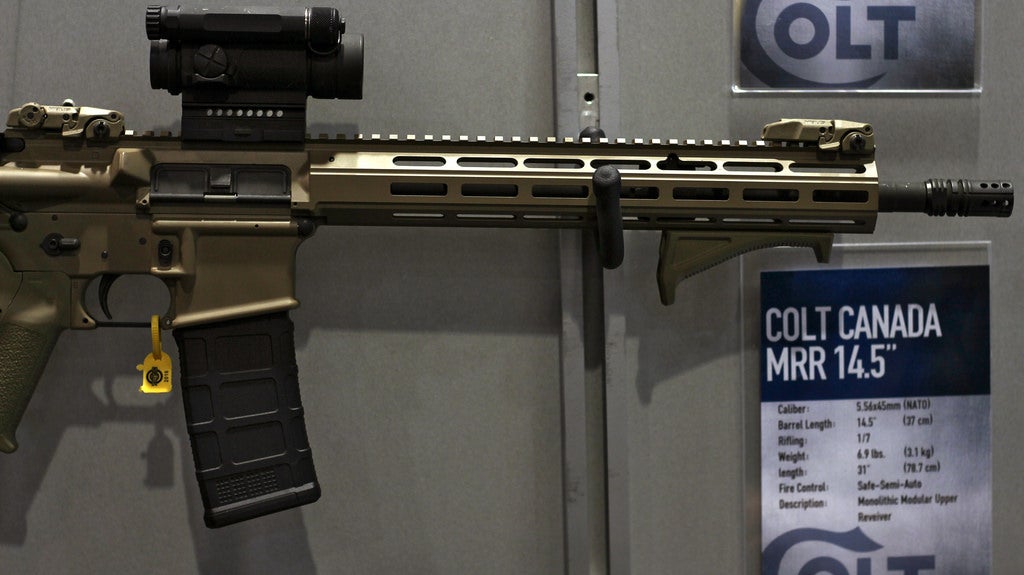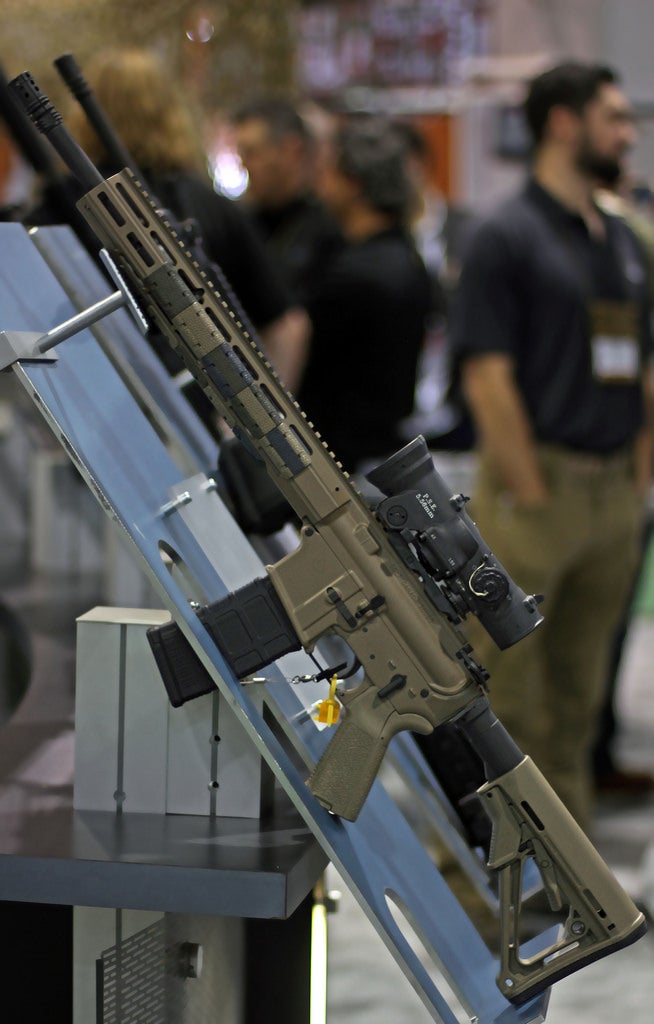Around this time last year, the first IURs were made available to Canadian civilian shooters. After that initial limited offering, a number of “blemished” units returned to Canada in the fall of 2015 as overrun from a Colt Canada military contract. I bought one, and have been having a great time shooting it:
Correction: The C9 LMG is made by FN, not Colt Canada. The C9A1 to C9A2 upgrade was performed by Colt Canada.
If you’re already familiar with Colt Canada, and just want to read about this particular IUR, feel free to scroll down to the review portion just after the photo of the rifle resting on the ground.
For those of you who are unfamiliar, Colt Canada was formerly Deimaco, is a subsidiary of Colt LLC, and provides all the rifles used by the Canadian Forces. In addition to the C7 and C8 programs, Colt Canada also manufactures rifles for a number of other NATO armies. Notably they’ve seen widespread adoption by UK Special Forces, as well as being issued to the Danish and Dutch armies.
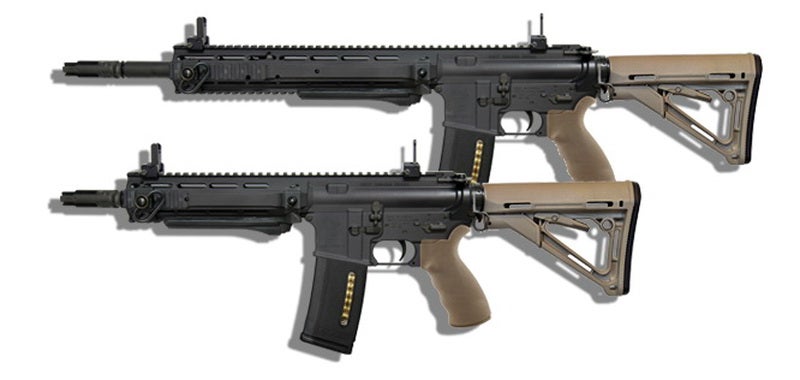
The UK’s version of the C8 IUR is identified as the L119A2 and issued to a multitude of Special Forces groups.
The IUR program is part of a long evolution of Canadian rifles. The initial C7 in 1984 would feel very familiar to a US Marine trained on the M16A2. But the C7A1 and C7A2 rifles used by the Canadian forces today are flattop rifles with a 3.4x Elcan C79 optic on top. The C7A2 introduced ambidextrous controls, green furniture, and a 6 position collapsible buttstock similar to that used on the US M4. A compact 15.7″ carbine was named the C8, which is what the UK Special Forces generally carry.
Rather than adopt an RAS quad rail system like the United States, the C7A2 and C8A2 were outfitted with a front-sight-base Tri-Rail for accessories, eventually leading to the IUR. The forward Tri-Rail is still the most common method of mounting IR lasers in the Canadian Forces, but Colt Canada has been marketing their IUR as an armory level upgrade to their various customers.
IUR stands for Integrated Upper Receiver, more commonly known as a monolithic upper receiver. The idea is that with a single unified rail the barrel can be free-floated, and any accessories like lasers and night vision will hold zero regardless of their placement.
Both Denmark and the Netherlands have bought and issued IURs to their infantry units, and the uppers made available in Canada are overruns from one of those contracts. The internet scuttlebutt I read seems to suggest that they’re Danish, based on the 40mm recoil launcher lug on the bottom and reduced side rails. However I have to confess that I’ve been unable to find any photographs of any NATO army using the exact IUR configuration I’ve got in my safe. The majority currently in the hands of Dutch and Danish soldiers seem to be full quad rail models, and usually feature a folding front sight base.
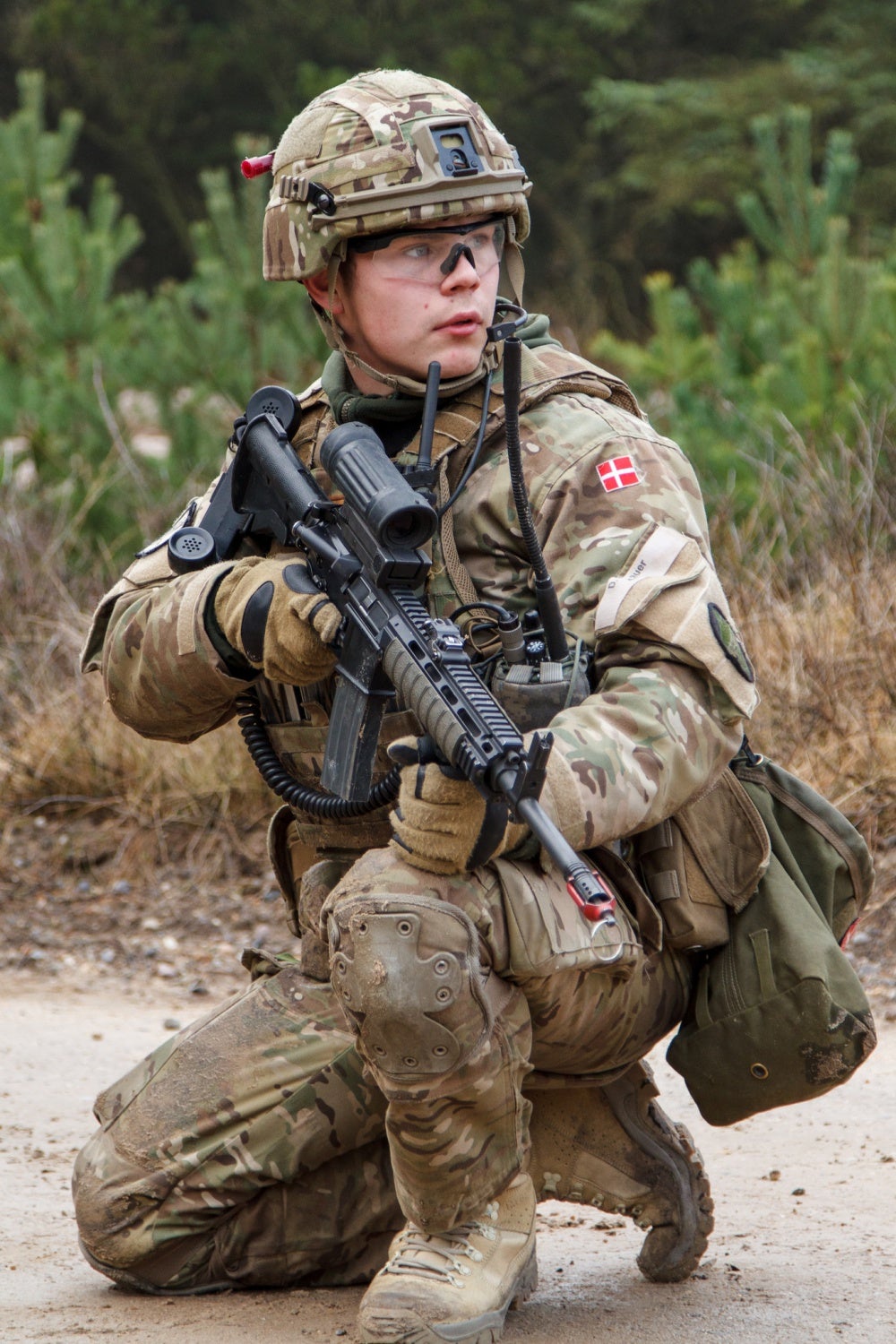
A Danish soldier carries his IUR during a NATO training exercise. Note the folding front sight and full length rail, different from the author’s rifle. However the C9 flash hider is clearly visible underneath the BFA.
Regardless of their specific origin, the IURs have seen a burst of popularity in the Canadian shooting community. While the initial uppers were $1100, the “blemished” units that had been shipped back and forth across the Atlantic were retailing for a remarkably low $550 at retailers across the country. Interestingly, none of the IURs available in Canada have included a bolt carrier group or charging handle. That falls to the individual user to buy.
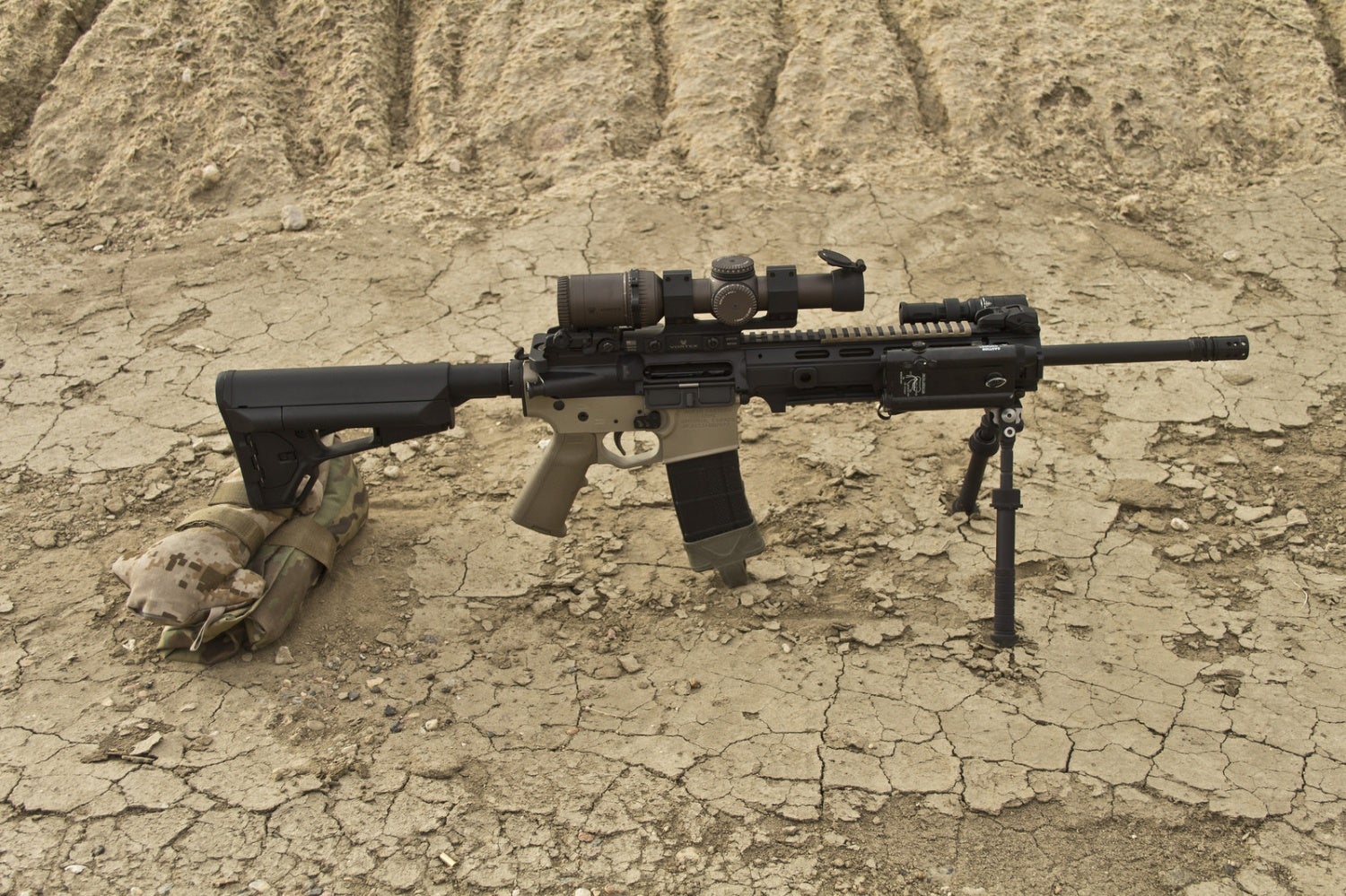
The author’s IUR out on the Alberta prairie. This configuration uses a lower from another Canadian manufacturer NEA, and was not a very tight fit.
I bought my IUR not just out of a Canadian loyalty and desire for limited edition firearms, but also as a heck of a deal on a monolithic receiver with a cold hammer forged barrel and milspec flash hider. Mounted on an NEA lower, I was producing groups in and around the 2MOA mark with 62gr M855 green tip ammunition. The expectation is that this rifle should shoot a little better than that, so I set out to find an approved lower to see what we could produce. Colt Canada of course encourages you to mount the IUR on a C7 or C8 lower, but to pickup a completed semi-auto CC lower right now is anywhere from $900-1300. While I love ambi controls and Canadian-made goodness, that is just way more than I can justify spending on a milspec lower.
O’Dell Engineering, the distributor of civilian Colt Canada products, does have a few suggestions for lowers, which included the American Tactical Imports Omni lowers. I think it’s fair to say that most shooters are skeptical of polymer AR-15 lowers, myself included, but at $100 I couldn’t argue with the price point, particularly when the official word was that they should produce a tight fit and groups.
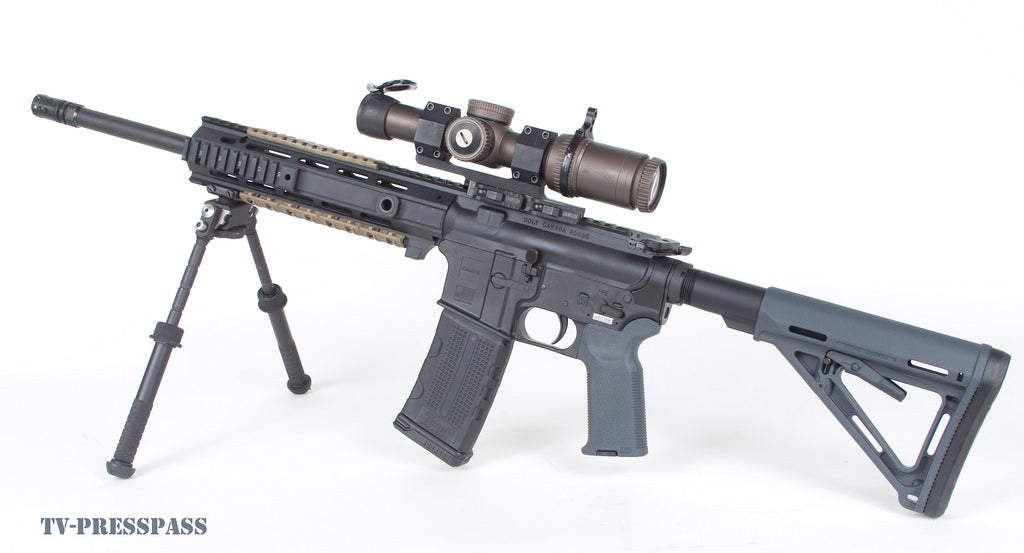
The author’s IUR paired with an ATI Omni polymer lower. Perhaps surprisingly, this recommended lower was a much tighter fit and produced tighter groups.
Sure enough, I had to gently hammer the IUR onto the Omni lower, and it showed a difference on the range. Using Swiss 63 grain RUAG 5.56 ammo my best 5 shot group was 1.3 MOA, and my best 3 shot group was 0.49 MOA, a substantial improvement over my initial trials. Interestingly the heavier 77 grain and 69 grain loads I tried shot terribly out of the IUR’s 1:7 barrel twist. I couldn’t get a group under 4 MOA with those weighty bullets.
The barrel inside the IUR is attached via a proprietary Colt Canada mount, but with the right tools it can be a quick change system. Remember these are rifles designed for amourer level servicing rather than individual tinkering.
The gas system is a standard direct impingement setup, but it does feature a straight profile gas tube underneath the handguard. The barrel is heavy profile right up to the gas block, then medium profile from there to the muzzle.
All IURs ship with an unusual muzzle device. The C9 conical flash hider was developed for the Canadian Forces C9A2 light machine gun, to improve full auto handling over the C9A1. The only way to own one at the moment is to buy an IUR. It’s designed to be a step up from the A2 muzzle device with a combination of moderate braking ability and superior flash suppression. I have to confess that I haven’t shot the IUR under NODs yet. The short days in Canada are paired with extremely cold nights. But on an evening shoot where my 10.5″ AR with a standard A2 produced plenty of flash, the IUR & C9 did not.
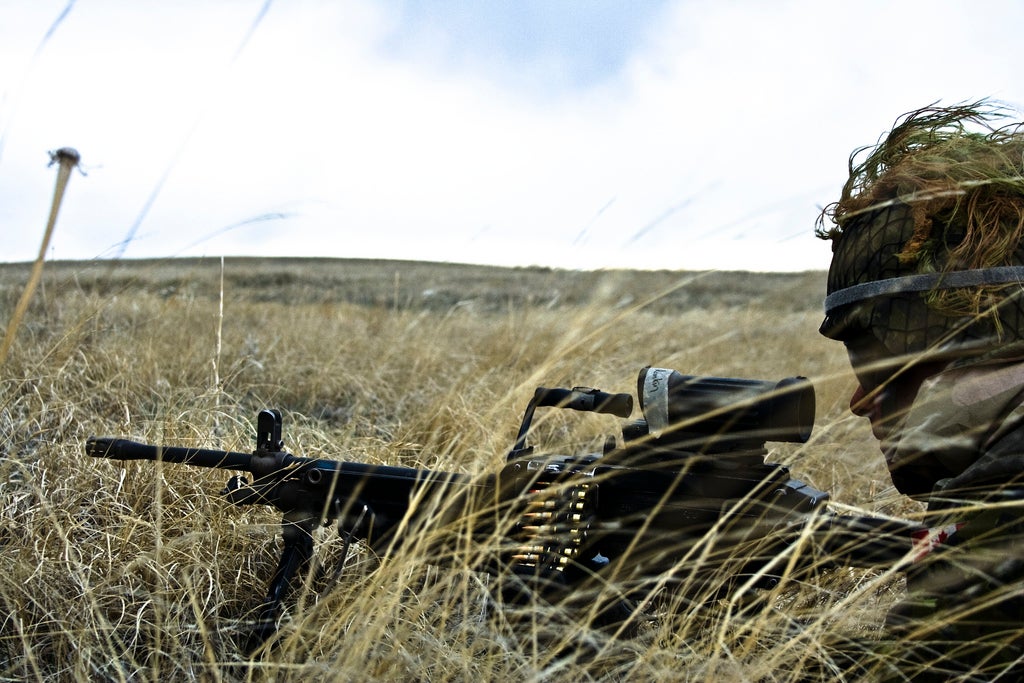
Author’s photo of the original C9A1 LMG in service with Canadian Forces Reserves, notice the birdcage style flash hider.
There are two major criticisms to be leveled at the IUR, the weight and the grip. At 4lbs 15 oz oz the completed upper means you’re looking at a 9lb 7oz rifle in my case. Not terrible, but a chunk more than your conventional 7lb M4 carbine.
The other odd point comes from the grip. Depending on a shooter’s hand size and grip the elevated QD sling slots built into the IUR can end up right underneath your palm. I found this personally puzzling as it does seem like the 3 o’clock and 9 o’clock rails have been reduced intentionally to offer a dedicated (if small) holding space.
While the initial run of IURs were $1100, the blemished units that blew out at $550 have all but disappeared. I suspect that in a year or two the original IURs will all be gone, largely replaced by the new Modular Railed Rifle or MRR that was announced in December 2015.
These new M-LOK rifles are marketed as the evolution of the IUR line, and will be available in numerous barrel lengths for military and Canadian civilian customers. By replacing the hand-guard picatinny with M-LOK, Colt Canada says they’ve reduced the overall weight by at least a half a pound between comparable rifles. From what I felt shouldering the MRR rifle at Shot Show last month, it feels more like a full pound less up front.
While the MRR might represent the future of the platform, I’m quite happy to have snagged my IUR for a reasonably good price. Beyond the pure nostalgia value of a limited run Canadian-made rifle, its also a hell of a shooter and a welcome addition to the gun safe.
 Your Privacy Choices
Your Privacy Choices
